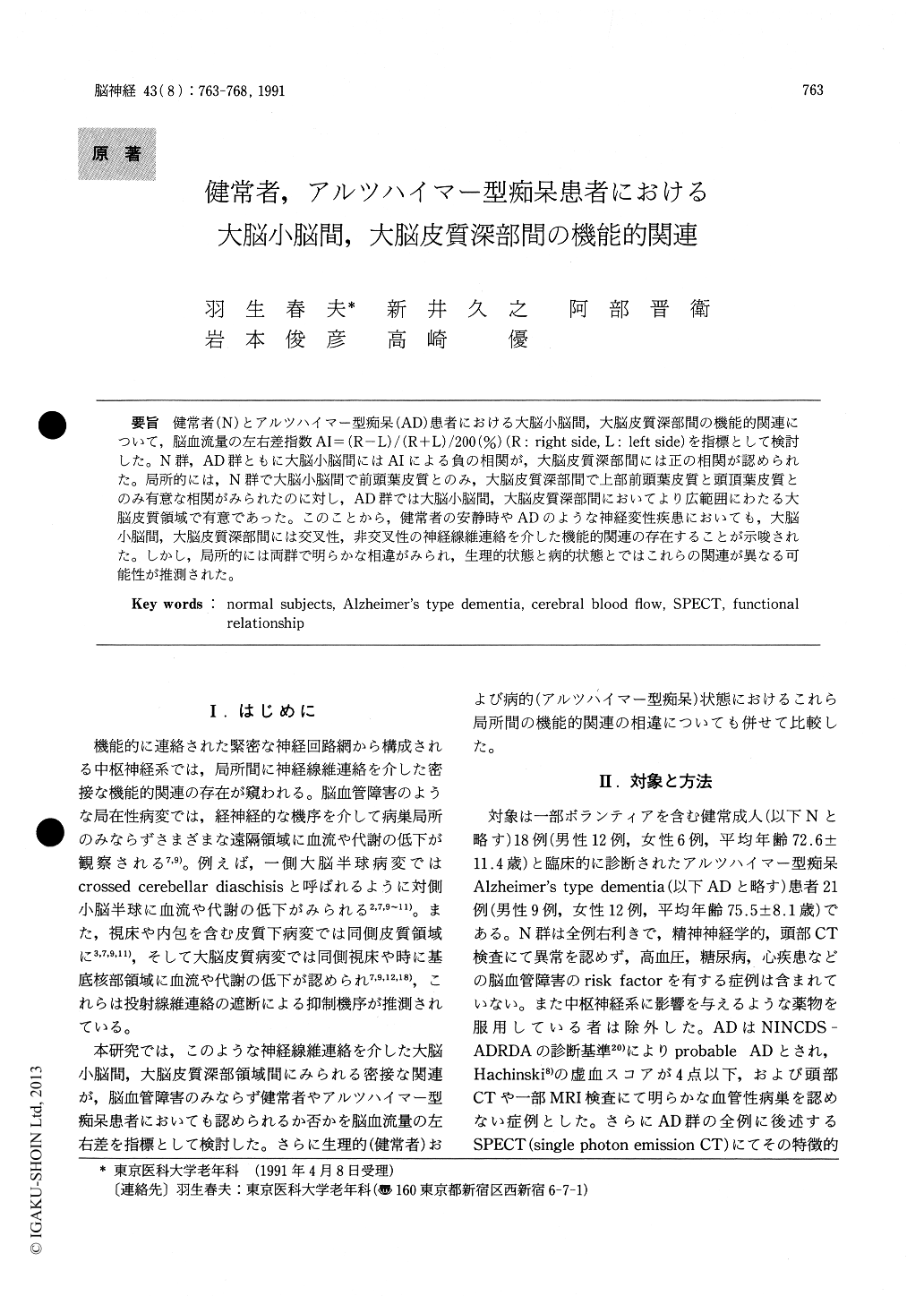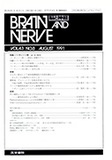Japanese
English
- 有料閲覧
- Abstract 文献概要
- 1ページ目 Look Inside
健常者(N)とアルツハイマー型痴呆(AD)患者における大脳小脳間,大脳皮質深部間の機能的関連について,脳血流量の左右差指数AI=(R-L)/(R+L)/200(%)(R:right side, L:left side)を指標として検討した。N群,AD群ともに大脳小脳間にはAIによる負の相関が,大脳皮質深部間には正の相関が認められた。局所的には,N群で大脳小脳間で前頭葉皮質とのみ,大脳皮質深部間で上部前頭葉皮質と頭頂葉皮質とのみ有意な相関がみられたのに対し,AD群では大脳小脳間,大脳皮質深部間においてより広範囲にわたる大脳皮質領域で有意であった。このことから,健常者の安静時やADのような神経変性疾患においても,大脳小脳問,大脳皮質深部間には交叉性,非交叉性の神経線維連絡を介した機能的関連の存在することが示唆された。しかし,局所的には両群で明らかな相違がみられ,生理的状態と病的状態とではこれらの関連が異なる可能性が推測された。
Sinece the various parts of the central nervous system are functionally interconnected, functional relationships between one region and another would be expected to be present. We investigated whether functional relation-ships between the cerebrum and cerebellum or between the cerebral cortex and deep gray matter exist in nor-mal subjects and patients with Alzheimer's type dementia (AD), using the indicator of asymmetry in cerebral blood flow.
Eighteen normal subjects (average age: 72.6±11.4 years) and 21 patents with AD (average age : 75.5±8.1 years) were studied in the resting state using SPECT with 123I-IMP. The asymmetry index (AI) of blood flow for matched left-right regions of interest was calulated as follows: AI= (R-L)/(R+L)/200(%) (R : right side, L: left side).
For both the normal and AD groups, we found a negative correlation between AI in the cerebrum and AI in the cerebellum. The AIs of widespread corticalsubregions, except the occipital cortex, were significantly correlated with AI in the cerebellum in the AD group. On the other hand, the only significant correlation found in normal subjects was between the AIs of the frontal cortex and cerebellum. A positive correlation between the AIs in the cerebral cortex and deep gray matter was observed in both the normal and AD groups. Though only the upper frontal and parietal cortices showed significant correlations with the deep gray matter in normal subjects, more extensive cortical subregions showed significant correlations in AD patients.
Our results suggest the existence of functional rela-tionships between the cerebrum and cerebellum or between the cerebral cortex and deep gray matter in both normal subjects and AD groups. They are likely to be mediated by neuronal mechanisms through the crossed and uncrossed projectional fiber connections, similarly to the pathological mechanism of diaschisis demonstrated in cerebrovascular lesions. However, it is considered that the functional relationships noted in the normal subjects are essentially different from those seen in pathological state.

Copyright © 1991, Igaku-Shoin Ltd. All rights reserved.


